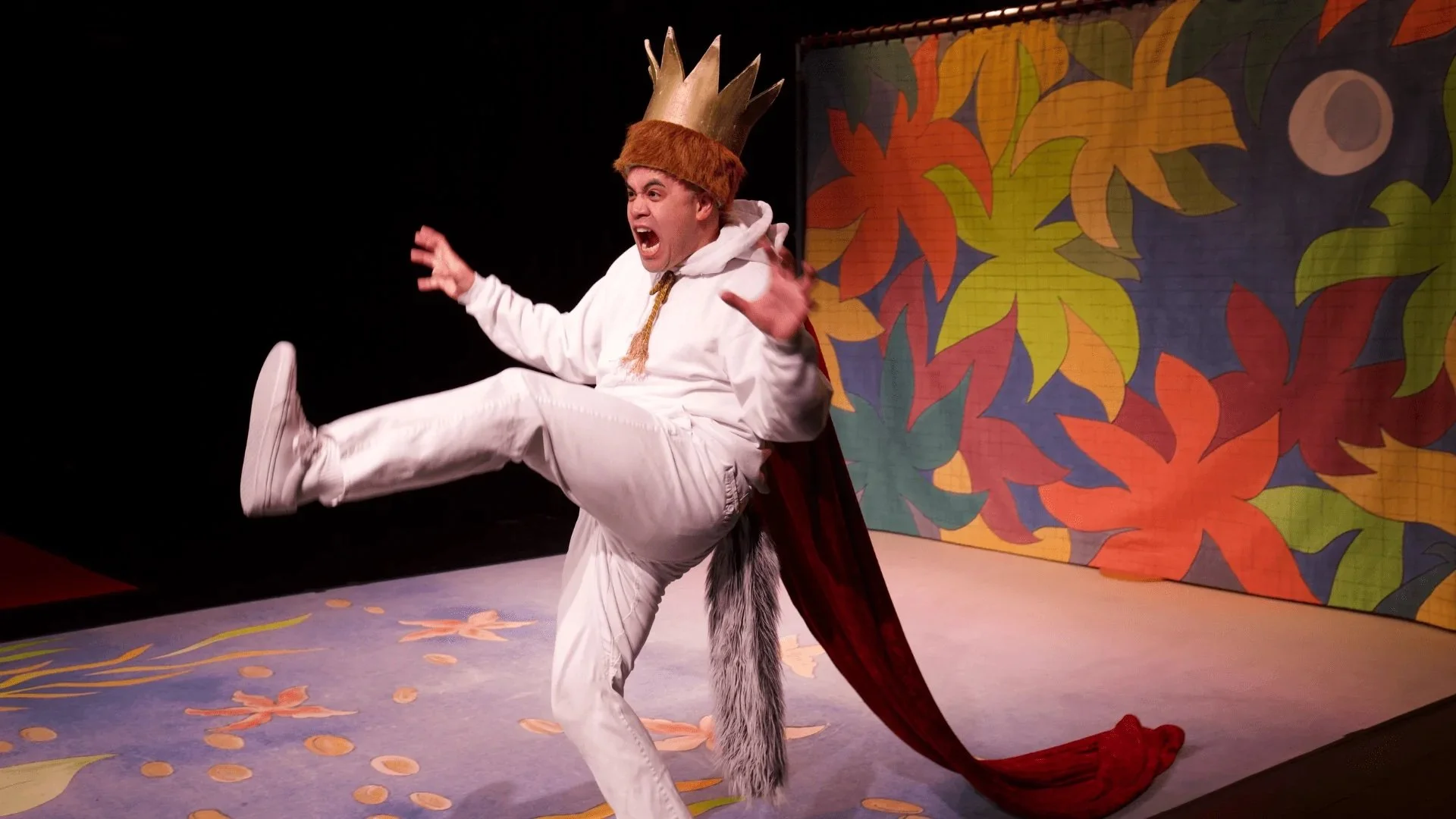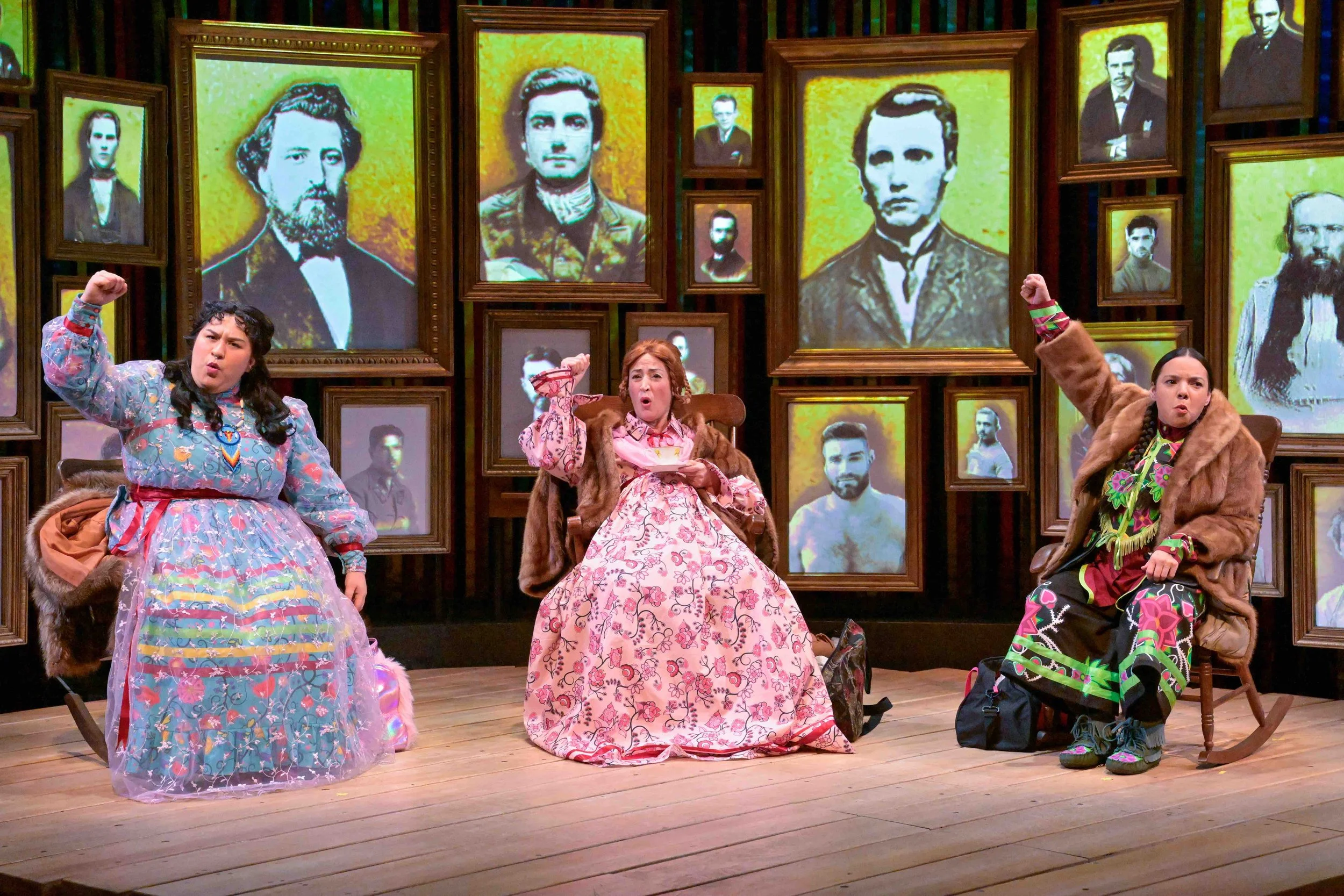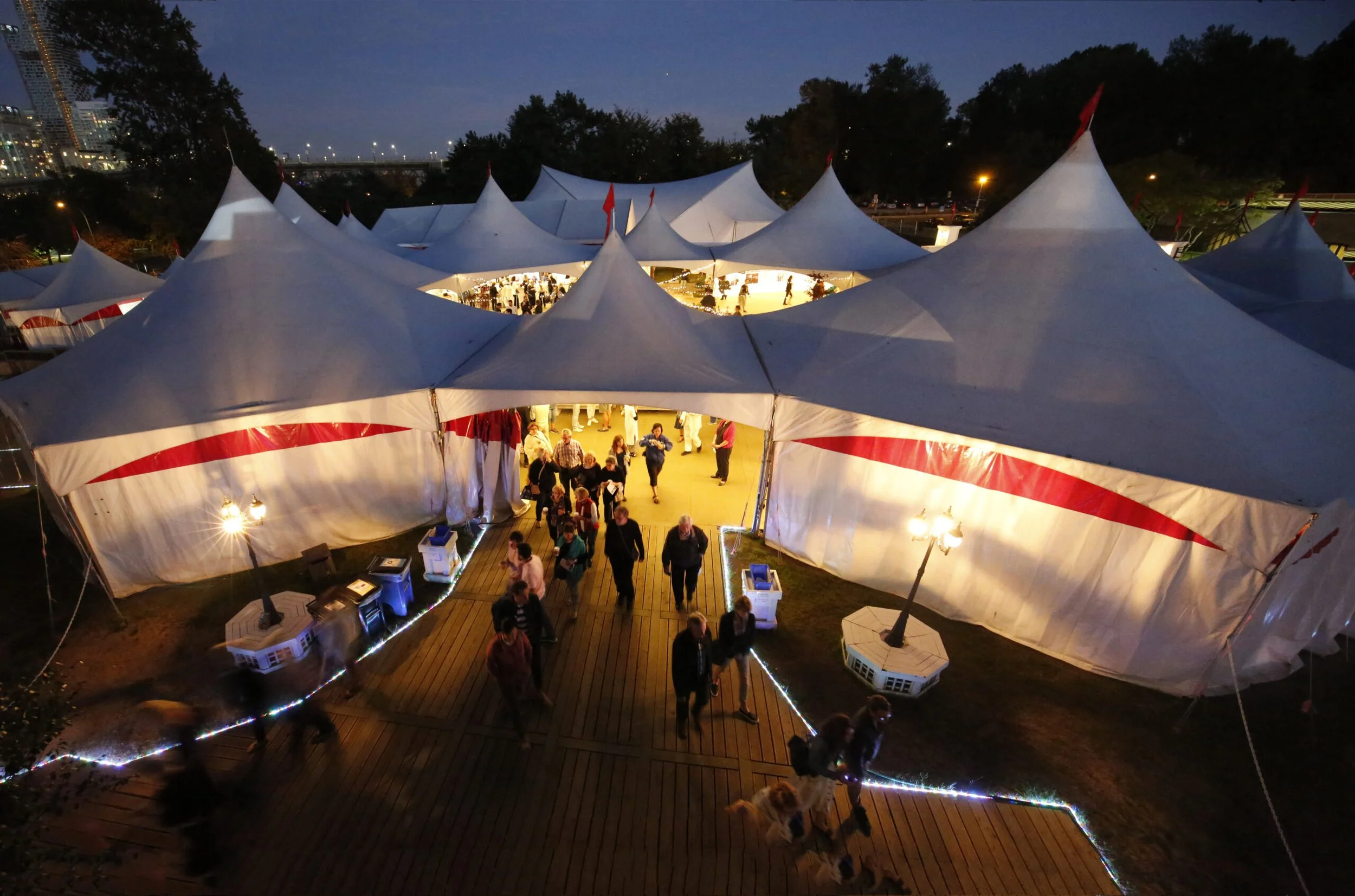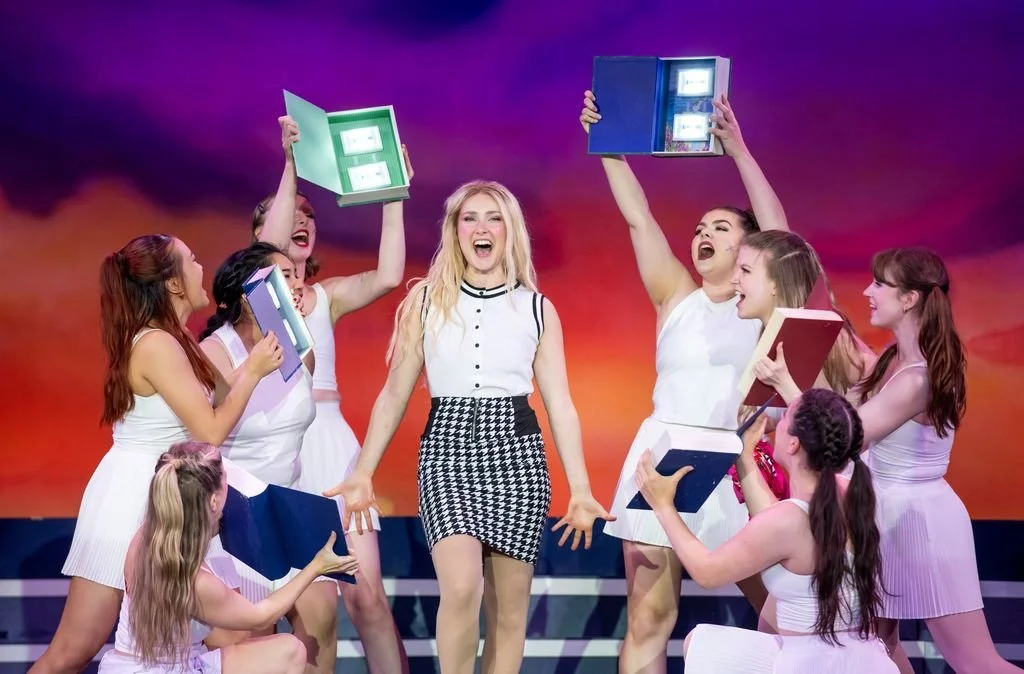Bard on the Beach's Henry V set designer Amir Ofek creates an immersive tent-within-a-tent out of an unexpected reused material
The set designer and costume creator Mara Gottler conjure a timeless, slightly dystopian world of travelling actors for Lois Anderson’s new adaptation
Chairs, old suitcases, coffee bags, and cracked earth, as a nomadic acting troupe puts a new twist on Henry V. Photo by Tim Matheson
Bard on the Beach presents Henry V to August 13 at the Howard Family Stage in Vanier Park
TO CREATE BARD on the Beach’s first fully immersive set, designer Amir Ofek searched hard for the right fabric to build a canopied environment that could somehow build a dystopian bridge between Burning Man and the travelling troupes of old England. He ended up using hundreds of repurposed burlap coffee bags to conjure the unique installation-like world of Lois Anderson’s new adaptation of Henry V.
Allow us to explain.
This innovative rendition of Shakespeare’s story of the brilliant, fearless king was first scheduled for the fest’s mainstage for 2020. The pandemic forced the fest to postpone the work, eventually moving it to this summer on the Howard Family Stage, where Ofek and the creative team knew they had to reimagine the story in a more intimate environment.
“A troupe of nine humans are putting on a show within a show, moving from place to place, packing everything to take to the next location,” the Israeli-born set designer explains to Stir of the concept, taking a break from installing his first full fabric set at Bard on the Beach. “Who is this troupe and where are they coming from and why are they telling this story? We also wanted to strip it of any time, any place—and that’s very challenging to design.”
Ofek began to imagine the space as a tent within a tent—suggesting the sort of portable enclosure the troupe might erect and take down on its travels. (That sense of portability would also echo through the costumes by Mara Gottler—but more from her on that later.)
Ofek was deeply familiar with the fest’s intimate Howard stage, having worked as a wig master and dresser for Bard soon after he first came here 15 years ago. “Unlike the bigger stage, it needs to communicate with the tent–the design needs to work in harmony with the structure of the tent, not the tent pretending to be a theatre,” he says. “Working with Lois, we wanted the audience to feel the show, feel the space honestly in their first step into the theatre. I want you, as you are walking to your seat, to feel like you are actually part of this event.”
Ofek and Anderson started looking at images that might hint at a dystopian place, ravaged by battle and climate change—for a story about the perils of choosing war over love. They looked especially at photographs from Nevada’s Burning Man festival—an influence that plays out directly in the cracked-desert floor of the stage.
Creating a canopy that would encompass the audience was new ground for the designer. “When I design, I usually design structures—you do drafting, you create a model, you give it to the scene shop, and they build it,” Ofek explains. “It’s very architectural.”
Ofek realized he would have to craft this tent installation as more of a fabric sculpture. And it was as he started searching for the right material that someone put him in touch with designer, educator, and textiles expert Heather Young. Young has her Masters of Design in Fashion and Textiles at the Glasgow School of Art, she sometimes works in costume design, she’s founded the hands-on The Craft Lab, and local fashion fans will remember her late, great DUST clothing label.
Set designer Amir Ofek
As Ofek describes it, he made a nervous phone call, unsure if the project would interest her. Young was all in, though, soon sourcing bolts of fabrics and dyeing, distressing, and weathering samples for him to see. It was amid those swaths that the set designer immediately zeroed in on the fabric that was just right for a weathered, patchwork theatre canopy: some recycled JJ Beans jute burlap bags, printed with coffee locations from around the world, that Young pulled out.
Fast-forward to the scene shop, where Young worked with a team to distress, print, and age the burlap bags that were donated, working in panels of old tarp and other found materials as they sewed them into long strips.
“Unlike usual, I was on site every day the whole week before the show with Heather, hanging those fabrics up on the Bard structure, draping them and creating billowing,” Ofek says, audibly psyched by the creative process. “You had to kind of sculpt it as you go, seeing what the fabric wants to do.”
Adding to the atmosphere is another unmissable set component: piles and piles of chairs staggered around the space. Ofek leaves the interpretation to you; for the designer, who is Jewish, the stacked, empty furniture has inescapable connotations of the Holocaust. But there are other reference points to the set pieces as well—and he hopes they’ll make you wonder what has happened to the human beings who once sat in those chairs.
In a separate interview, veteran costume designer Gottler describes a creative process where she was more connected to the set designer than usual. Working with Anderson, they came up with an idea of what Gottler says are “world travellers in a way, which is why we could hit at past and present and a tiny, tiny bit of dystopian future—blending them so that they look, as I say in the program notes, ‘anywhere and nowhere, anytime and no time’.”
Gottler uses only natural fibres and dyes in the sand-bleached costumes, echoing the materials that are used in Ofek’s set. “When they become characters in the play, we use very simple things to suggest to the audience who they are,” the designer relates. “We’ll have a very simple crown, or in the French world, we’ll have very basic robes that can all be rolled up or folded into suitcases….Everything has to be packable and look like it belongs in this world.”
All the costume changes, she adds, are done onstage. And, in a small nod to Burning Man, much of the clothing is coated in a fine desert dust. It hurts sometimes, as a costume designer, to destroy a fine piece of apparel after you’ve just finished sewing it, she admits: “Our ponchos were gorgeous and now they look like they’ve been dragged through dust!”
Still, she adds: “It’s one of the most cohesive productions I’ve every worked on.”
What exactly will it look like, for the audience joining these travelling players under the elaborate discarded-burlap-bag canopy? You’ll have to wait and see. For now, we offer this attempt by Ofek to describe the effect: “It looks almost like a Brechtian circus: we’re inviting the audience to see a show at the end of the world.”


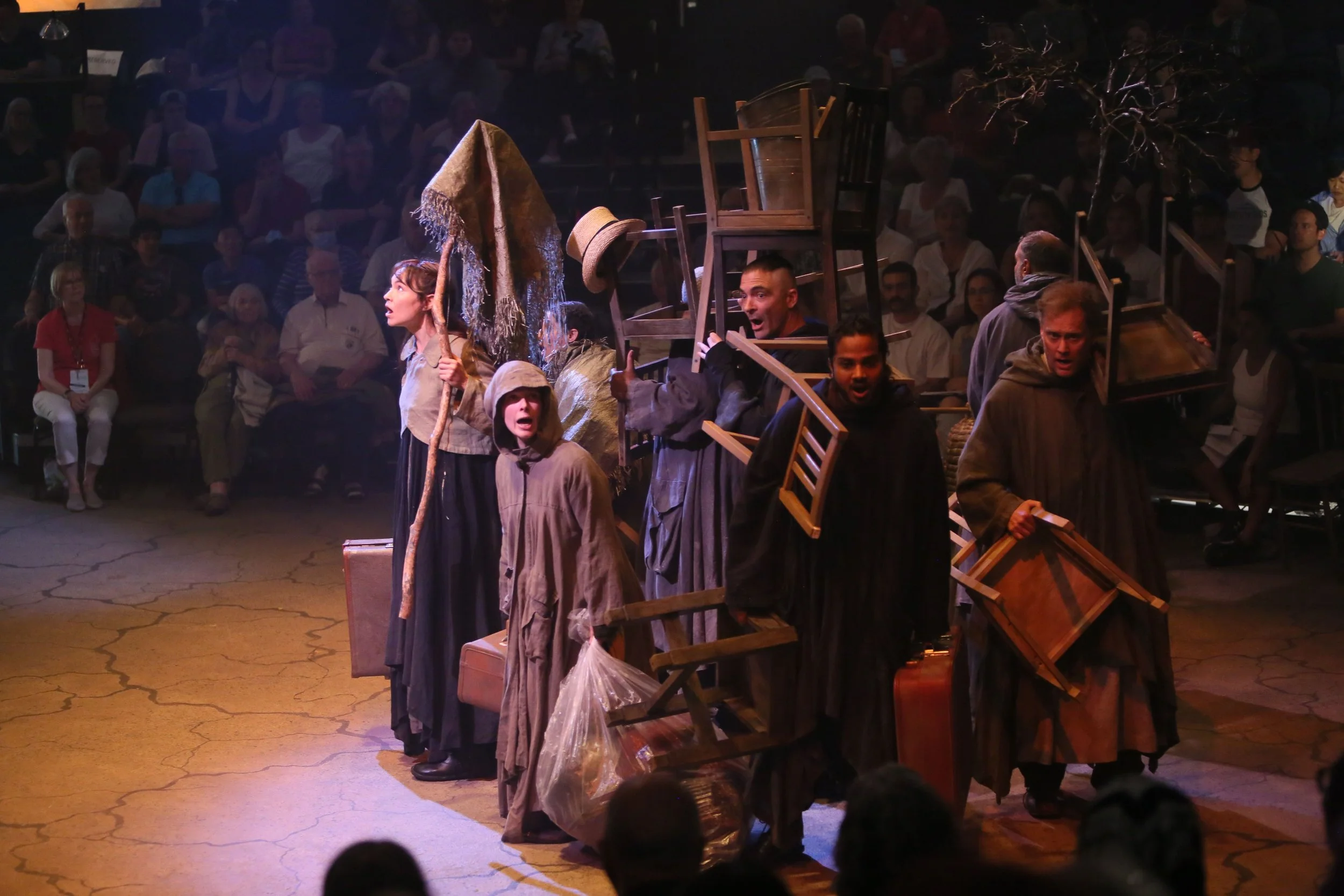


![Theatre review: Complete Works of William Shakespeare (abridged) [revised] [again] takes pleasingly panicked tour of the Bard’s canon](https://images.squarespace-cdn.com/content/v1/5f10a7f0e4041a480cbbf0be/1752776963817-BS2BYYQMLMSGU9OG3E37/Nathan-Kay-and-Craig-Erickson.-Photo-By-Tim-Matheson.jpg)
